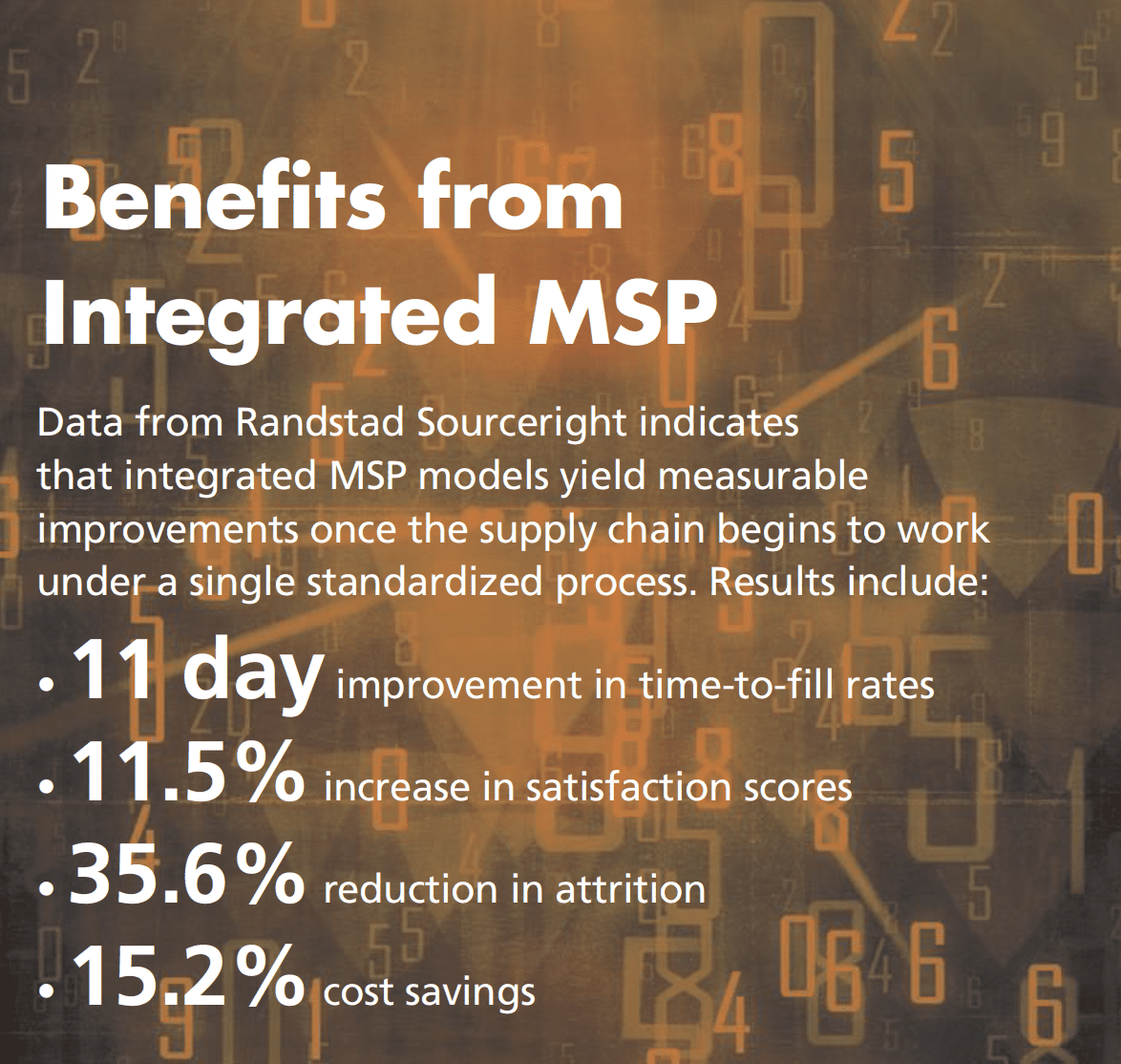Pairing a VMS with a traditional MSP -and its many benefits -is now possible for organizations with lower spend.
By Brandon Vogel
Consider this scenario: An organization and a handful of other vendors are sharing a client with an established budget. Each vendor gets a small piece of the pie -enough for them to stay interested, but not enough to be truly invested.
This type of scenario is happening in the world of contingent workforce management when companies with less than $30 million in annual spend engage in mid-market, vendor-neutral managed service programs (MSPs). Financial modeling indicates that this type of approach is not sustainable.
For example:
Low-volume, vendor-neutral MSP budget = $20 million
Average MSP fee = 3 percent
Typical MSP provider earnings (after costs) = 1 percent
The very nature of the program prevents MSP providers from helping organizations make the most of their resources from an overarching strategic perspective.
Instead, what results is a barely profitable program, yielding under $200,000 annually. These kinds of programs are transactional in nature and offer the most basic levels of support and engagement, providing little value to the talent function and overall organization.
The unfortunate impact of this on an organization is a lack of MSP provider service, investment, dedicated resources, and innovation. In this situation, the organization and talent experience are compromised and the overall adoption and success of the program are in jeopardy.
An Alternative Approach
In recent years, companies with smaller contingent labor spend have begun to see the value of capturing and managing this spend using a vendor management system (VMS) combined with an MSP. There are many benefits to be realized from this trend, including:
- process control through defined workflows
- efficiency supported by automation technology;
- access to talent through an established supplier network;
- transparency and visibility via talent analytics; and
- value creation, including cost savings and cost avoidance.
For these benefits to be maximized, however, the program must be intentionally designed with technology in mind. The accessibility of and advancements in VMS technology have opened the door for many organizations with non-employee labor spend under $30 million. VMS technology allows talent leaders to examine the way they procure these resources. By providing data on virtually all phases of activity throughout the contingent workforce lifecycle, the VMS delivers the insights needed to make data-driven decisions about the way talent is deployed to realize business goals. Many seek a managed solution that leverages the benefits of both a VMS and MSP to achieve process control and vendor/rate rationalization goals.
 Moving away from a vendor-neutral approach to MSP solves the math problem above. Using an integrated MSP model, in which there is direct delivery of contingent talent, allows organizations to benefit through more strategic allocation of program resources and deeper value-driven relationships. With stronger relationships and greater efficiencies in an integrated MSP model, the MSP partner has the bandwidth to be a true contingent talent advisor to the organization, finding ways to improve talent quality and program results, and enhance talent and hiring manager satisfaction.
Moving away from a vendor-neutral approach to MSP solves the math problem above. Using an integrated MSP model, in which there is direct delivery of contingent talent, allows organizations to benefit through more strategic allocation of program resources and deeper value-driven relationships. With stronger relationships and greater efficiencies in an integrated MSP model, the MSP partner has the bandwidth to be a true contingent talent advisor to the organization, finding ways to improve talent quality and program results, and enhance talent and hiring manager satisfaction.
This translates into a more strategic partnership that enables the organization to receive additional investment in the form of resources and value-added services. Organizations that take this approach can benefit from talent retention and engagement programs, specialized hiring initiatives, and best-in-class internship management programs.
For example, a Fortune 500 energy company has seen greater value from this approach. As an organization that relies heavily on its contingent workforce of IT, administrative, and professional talent, the company’s talent leaders hoped to transform its existing vendor-neutral MSP program to a more holistic and integrated model.
With a high-touch, direct-fulfillment model, the MSP partner is able to add greater value to the program. The program provides extensive and ongoing support, including workflow design, change management processes, staff training, talent analytics, and more.
Under the new model, the energy company has gained access to high-quality talent, has better visibility into and control over spend, and is able to deliver a consistently positive experience for its talent and hiring managers. In the 2018 fiscal year, the company saved $4 million while achieving exceptional satisfaction all around.
Managers consistently (99 percent) rate the MSP program an eight out of 10 on average, and 70 percent of contractors who are submitted for consideration receive an offer. Time to fill averages 12 days, with a 97 percent average retention rate over the course of 2018.
Additionally, the staffing performance of an integrated MSP typically exceeds the rest of the supply chain, with a faster cycle time. This is particularly true in specialized disciplines, such as IT, engineering, and life sciences. Companies can also look forward to increased talent satisfaction scores and a reduction in contingent workforce turnover.
Now it’s time to do the math. HR and procurement need to challenge their talent function and MSP partner to collaborate on ways that allow them to be more strategic. How can they gain greater value in the contingent workforce management program? Where are efficiencies that don’t compromise talent quality? What business challenges could be better addressed through contingent workforce strategy? If a vendor-neutral approach is just filling talent gaps, then there’s an opportunity to do so much more.
Brandon Vogel is director of solutions design of contingent labor programs for Randstad Sourceright.














